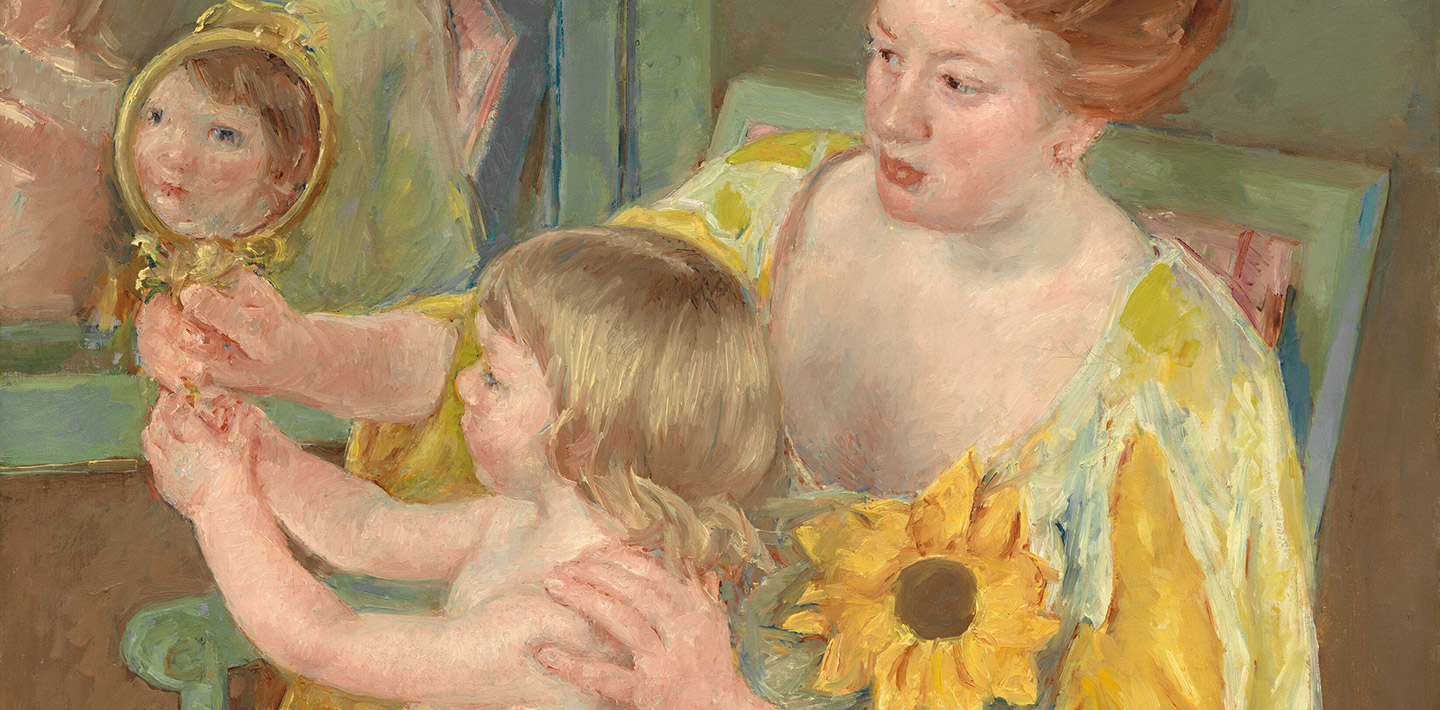This month marks the 100th anniversary of the 19th Amendment, which granted most women the right to vote in the United States. In contemplating this historic moment, I find myself thinking about Mary Cassatt’s painting

Mary Cassatt, Woman with a Sunflower, c. 1905, oil on canvas, Chester Dale Collection, 1963.10.98
As I was researching this painting for my doctoral dissertation, I became captivated by the sunflower, a radiant focal point in Cassatt’s composition. While scholars before me had dismissed it as merely a pretty decoration, my research revealed that it bore a powerful political message. The sunflower had been the official symbol of the National American Woman Suffrage Association since 1896. By the time Cassatt painted Woman with a Sunflower around 1905, sunflowers had appeared on all kinds of official and promotional suffrage materials, such as a button emblazoned with the phrase “We want to vote for president in 1904,” now in the collection of the Museum of the City of New York.

We Want to Vote for President in 1904, Museum of the City of New York. Gift of the Estate of Mrs. Carrie Chapman Catt through Mrs. Alda H. Wilson, 1947. 47.225.12
That Cassatt would so prominently display a symbol of the suffrage movement in her painting comes as no surprise. A fierce advocate for women’s rights, she was unafraid of using her work to advance the cause. Woman with a Sunflower was among the 20 or so paintings by Cassatt included in a 1915 exhibition to raise money for the suffrage campaign. The exhibition, staged at the Knoedler Gallery in New York City, was organized by Cassatt’s close friend and collaborator, Louisine Havemeyer, a prominent art collector. Using proceeds from entry fees and the sale of exhibition pamphlets, Havemeyer founded the Woman Suffrage Campaign Fund. Cassatt was very impressed by her friend’s efforts, writing to Havemeyer after learning of her success, “My dear, I am so very glad about the exhibition . . . you deserve all the credit. . . . The time has finally come to show that women can do something.”
Cassatt and Havemeyer were a formidable pair. In addition to her fundraising efforts, Havemeyer wrote passionately about the fight for voting rights and was even arrested for her participation in protest actions. Indeed, Havemeyer attributed her dedication to women’s rights to Cassatt’s influence, recalling a letter she received from the artist in 1914: “Work for suffrage,” the painter implored her friend. “If the world is to be saved, it will be the women who save it.” Given its suffragist symbolism, it is fitting that Havemeyer would go on to purchase Woman with a Sunflower that same year.
Over the years, the painting’s title was changed a number of times, eventually obscuring the significance of the sunflower and its historical meaning. The decision to restore the painting’s original title allows us to bring Cassatt’s political message more clearly into focus.
New research opens up new avenues of interpretation, inviting us to reconsider seemingly familiar works of art. Looking at this painting now, I’m led to wonder what the young woman envisions when she sees the child’s face in the mirror. Is it hope for a future that is more just and equitable?
On the occasion of the centennial of the 19th Amendment, I am reflecting upon how, much like my work on this painting, the fight for voting rights is as yet unfinished. Cassatt’s legacy stands as a source of inspiration to continue both pursuits.
